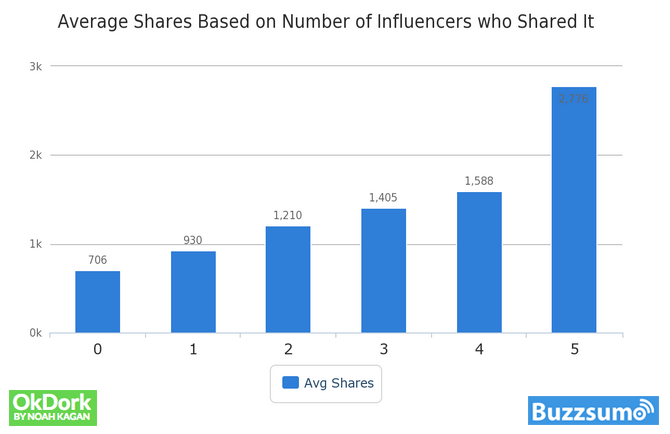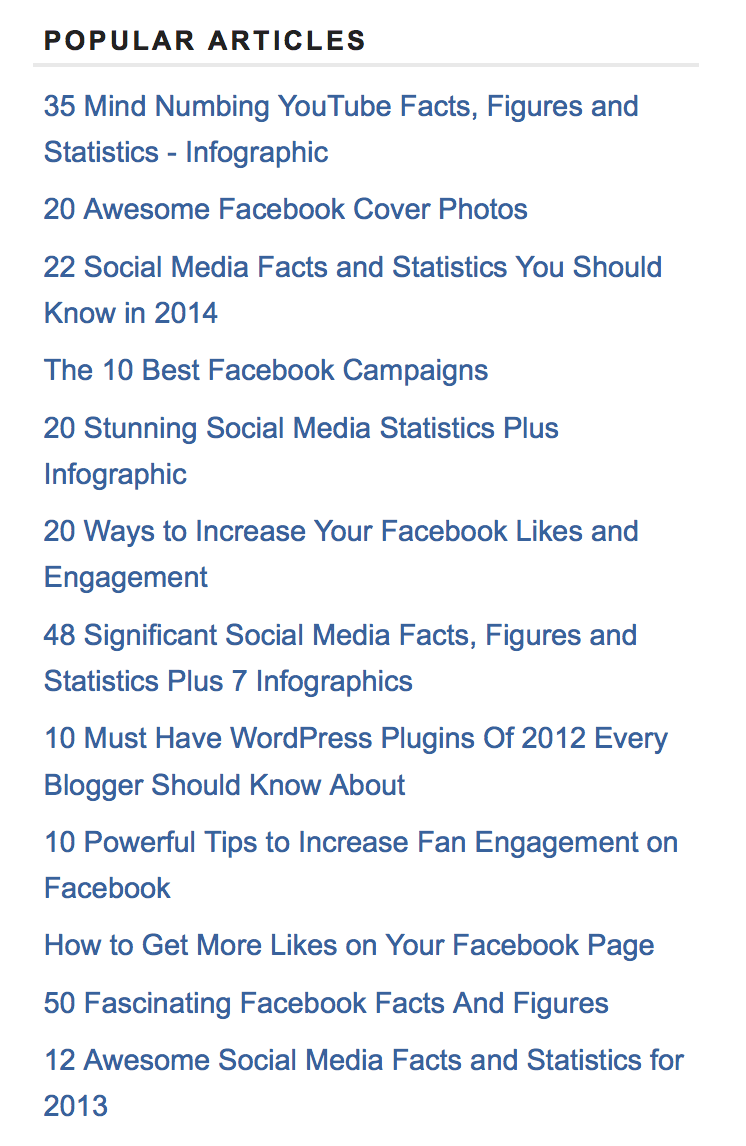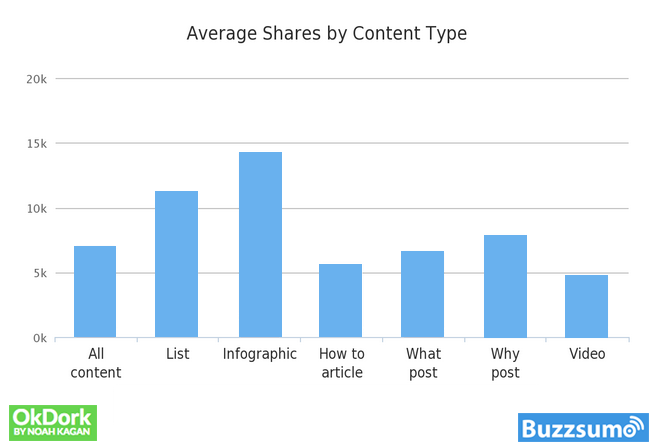Editor’s Note: This article was originally published by Web Marketing Today. Practical Ecommerce acquired Web Marketing Today in 2012. In 2016, we merged the two sites, leaving Practical Ecommerce as the successor.
People who are new to content marketing sometimes say, “I want my post to go viral.” Or, “We want content guaranteed to go viral.” It’s a great goal, but even the best marketers in the business don’t go viral every time they publish.
Getting a post to go viral requires a mix of first-rate content, a responsive audience, and serious content promotion skills. It is rare for an unknown blogger or videographer to come up with even a genius idea and have it hit the mainstream.
While viral hits are unusual, practical marketers with reasonable resources can see a viral win at least a couple of times of a year. They just have to understand their audience, content promotion, and what content tends to get shared.
We’ve covered content promotion in other articles. (“The Secret to Successful Content Marketing” is a recent article.) But we have not considered what makes people share content. So let’s take a look at that now.
There are two levels of sharing content. First, there are the deep psychological forces that shape our behavior. Then there are the more tangible, quantifiable things that get people to share — like added images, colors, and features that get us to click.
Psychological Forces Behind Sharing
It appears no one, even online, likes a sour puss. Researchers at the University of Pennsylvania have found people are far more likely to share positive content than negative. Other data supports this.
HubSpot’s Dan Zarella, for example, found negative comments suppressed audience growth.

Negative content hurts audience growth, according to HubSpot’s Dan Zarella.
The U. Penn researchers also found people shared content that inspired awe in them. Awe was the most powerful indicator of sharing. That’s also what Noah Kagan, the Internet entrepreneur, found after he studied 100 million articles and how they were shared.

A person’s emotions when reading content affect whether she shares it. The “awe” emotion resulted in 25 percent sharing. “Sadness” resulted in 1 percent sharing.
Practical, useful content is also far more likely to get shared. You can see this all over the Internet, in “most popular posts” lists on almost any site. “How to” posts do well, especially when they are easy to understand and to apply. The New York Times discovered this in their study, The Psychology of Sharing. Ninety-four percent of the people they interviewed “carefully consider how the information they share will be useful to the recipient”.
How to Get People to Share Your Content
1. Make it easy for people to share your content. Any more than 2 to 3 clicks of a button, and it’s too much work to share your content. One simple example of making content easy to share is “tweetables.” Blogger Michelle Shaeffer recently added tweetables to her posts and got significantly more traffic.
2. Ask them to share it. Don’t make people remember that they could share your content, either. Remind them with a call to action. Pinterest pins with a call to action get 80 percent more shares. Tweets that ask people to retweet them get 51 percent more retweets than tweets that never ask.

Reminding users to share your content often helps increase retweets.
3. Use images. Tweets with images are 94 percent more likely to be shared, and photos on Facebook get 53 percent more likes. According to media firm Social Bakers, 93 percent of the 5,000 most shared posts on Facebook last spring were photos. Only 3 percent were status updates.

Posts with the most shares often have photos.
It works for Twitter, too. Tweets with images are 92 percent more likely to be retweeted.

Twitter posts have a greater chance of being retweeted if they include pictures. Source: Dan Zarella.
4. Create “round-ups” as blog posts or other content. Round-ups are a content format. You ask a bunch of experts one question, then round up all their answers in a blog post. Round-ups can also be SlideShares or audio recordings, but most of the time they’re blog posts.
Round-ups can get very high share counts. That’s because once the post is published you can reach out to everyone who participated in it and suggest they promote the post. Experts who get asked to do roundups typically have large audiences. So instead of just you promoting your post, you have all the experts you worked with promoting your post.
Round-ups leverage the principle of influencers. They are just one tactic of the growing popularity of “influencer marketing.” Here’s some more evidence of the power of influencers.

Influencers sharing posts can have an effect on overall sharing.
5. Write listicles. Listicles are articles based on lists. This post is a hybrid listicle. Some people look down on listicles as being too formulaic. But for better or worse, listicles get shared more than almost any other format. That’s why people like me keep writing them. To see an example of how widespread listicles are, check Jeff Bullas’s very popular blog. These are the most popular posts on his site.

Jeff Bullas top posts are almost entirely “listicles.”
Eleven of those twelve posts are listicles. Noah Kagan’s analysis of 100 million articles also confirmed listicles get large amounts of shares. In his study, only infographics get more shares than listicles.

Average shares by content type. Note “Infographic” and “List” are the most shared.
6. Write strong headlines. We published an entire post on how to write better headlines a few months back. It’s worth a read if you want to write better headlines. Your headline largely determines whether or not your article gets shared. 80 percent of people will never read beyond your headline.
One of the most important keys to writing good headlines is grab to your readers emotionally. There’s a tool that can measure the emotional power of your headlines, and even give them a score. It’s the Advanced Marketing Institute’s Emotional Marketing Value Headline Analyzer.
While this tool is helpful, don’t abuse it. Don’t promise things in a headline that your content can’t deliver. Facebook recently named this “linkbaiting,” and has banned it.
7. Write long-form content. The blogger who advised us all to “write epic s*&%,” was on to something. Epic content gets shared. Three different studies support this.
Here’s what the Buffer app blog found on a recent content audit.

Articles with more words were shared more often, according to Buffer’s study.
Here’s what Neil Patel found.

“Posts that were under 1,500 words, on average received 174.6 tweets and 59.3 Facebook likes. Posts that were over 1,500 words, on average received 293.5 tweets and 72.7 Facebook likes.”
And finally, here’s Noah Kagan’s data.

Shares by content length.
There’s plenty of proof that longer posts get more shares, but less than 5 percent of bloggers write posts longer than 1,500 words. That’s according to Orbit Media’s survey of 1,000 bloggers from earlier this year.

Less than 5% of bloggers write posts longer than 1500 words.
Those are just a few ways to get people to share your content. There are dozens of tricks of content creation, content promotion and audience engagement that I haven’t mentioned here.
What’s your favorite way to get people to share your content?


